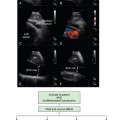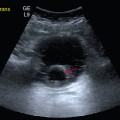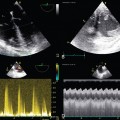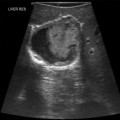17 Since its advent in 1977, percutaneous coronary intervention (PCI) has become a dominant treatment modality for ischemic coronary artery disease, especially unstable angina and acute myocardial infarction. During the last 2 decades, intravascular ultrasound (IVUS), a catheter-based technique that provides tomographic images perpendicular to the length of the coronary arteries, has been used widely in clinical research and has contributed to technologic improvements in interventional cardiology because it provides invaluable information on the coronary vascular lumen and wall. IVUS uses high-frequency catheter-based transducers to visualize all basic components of the vessel: the cross-sectional luminal size, shape, and vessel wall, as well as the various layers of the wall such as the intima, media, and adventitia and perivascular structures. IVUS examination of the carotid arteries may enable the morphologic characteristics of the carotid lesions to be assessed and thus treatment to be optimized. IVUS evaluation of the venous circulation is still limited. However, the method has been used to study arteriovenous malformations and mainly to demonstrate inferior vena cava compression or thrombosis, as well as to guide stent and filter placement.1 In the bare metal stent (BMS) era, the major use of IVUS has been for optimization of stent deployment, particularly for complex lesions such as bifurcations, left main lesions, in-stent restenosis, and saphenous vein graft lesions. A challenging problem after BMS implantation was in-stent restenosis, and IVUS predictors of this phenomenon include smaller minimal stent area (MSA), stent underexpansion, stent edge dissection, incomplete stent apposition, and incomplete lesion coverage.2 IVUS is superior to coronary angiography in assessing vessel size, calcium content, and lesion severity.3 Therefore IVUS can be used before PCI to assess reference lumen dimensions and lesion length for appropriate stent sizing and to identify superficial calcium, which may lead to prestent rotational atherectomy. Poststent IVUS assessment may detect complications of PCI and suboptimal stent deployment.4 Previous studies have shown a beneficial effect of IVUS guidance on postprocedural angiographic results and stent restenosis during long-term follow-up as a result of a larger MSA with a higher postdilation balloon pressure.2,3,5 Stent under expansion (identified by IVUS) can be treated with appropriate postballoon dilation. IVUS allows more aggressive intervention with a larger-diameter balloon with confidence in terms of safety; thus BMS implantation under IVUS guidance can provide a bigger MSA and more favorable clinical outcomes than angiographically guided PCI can. Although studies have differed regarding the best cutoff value for MSA (ranging from 6.5 to 9.0 mm2), larger post-PCI areas consistently predict lower rates of restenosis.6,7 In a registry of 1706 patients, the risk for restenosis with BMSs decreased 19% for every 1-mm2 increase in MSA.8 Routine use of IVUS for BMS implantation is still controversial. Several meta-analyses have shown that when compared with angiographically guided PCI, IVUS-guided PCI results in an improvement in acute postinterventional results (larger minimal luminal diameter) and a lower frequency of repeated revascularization, angiographic restenosis, and main adverse coronary event rates, but no difference in the incidence of death or myocardial infarction during the follow-up period.9–11 The advent of drug-eluting stents (DESs) has markedly reduced the rate of in-stent restenosis. However, rapid implementation of DESs in standard practice also led to expansion of the indications for PCI to high-risk patients and complex lesions, and in-stent restenosis still occurs in 3% to 20% of patients, depending on patient and lesion characteristics and DES type.12 Indeed, several retrospective investigations have showed the potential of IVUS in optimizing stent deployment, even in the DES era. In a study of 449 patients (543 lesions) who completed 6-month angiographic follow-up after the implantation of sirolimus-eluting stents, the postprocedural minimum stent lumen area and stent length on IVUS emerged as the only predictors of stent restenosis.13 In another study, unselected patients undergoing DES implantation under IVUS guidance were identified and compared with those undergoing angiographically guided PCI,14 and it was suggested that IVUS-guided DES implantation may significantly decrease rates of definite stent thrombosis at 30 days and 12 months. However, the few randomized controlled trials evaluating IVUS guidance for PCI with DESs showed that IVUS-guided PCI with DESs may not influence rates of restenosis. One published randomized trial, HOME DES (Long-Term Health Outcome and Mortality Evaluation after Invasive Coronary Treatment Using Drug Eluting Stents With or Without IVUS Guidance), randomized 210 patients to an IVUS-guided PCI strategy versus an angiographically guided strategy.15 In this study the IVUS-guided strategy led to more frequent postdilation, higher balloon inflation pressure, and larger balloon size, but it did not result in lower rates of target vessel revascularization or major adverse cardiac events. The reduced risk for in-stent restenosis in patients undergoing DES implantation is offset by concerns about stent thrombosis.16 A study featuring a propensity-matched analysis in 884 patients treated with DESs showed a significant reduction in the stent thrombosis rate at both 30 days (0.5% vs. 1.4%, P = .046) and 12 months (0.7% vs. 2.0%, P = .014) in the IVUS-guided PCI group.14
Intravascular ultrasound
(CONSULTANT-LEVEL EXAMINATION)
Overview
Clinical applications of intravascular ultrasound for percutaneous coronary interventions
![]()
Stay updated, free articles. Join our Telegram channel

Full access? Get Clinical Tree


Radiology Key
Fastest Radiology Insight Engine






